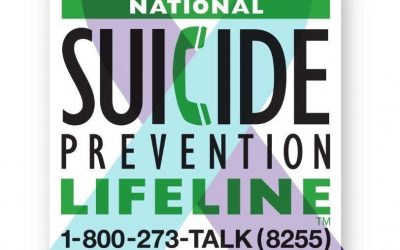
Many individuals between the ages of 18 and 25 tend to present with higher rates of suicide attempts than any other age group; and even when rates of suicide are very similar among men and women, women tend to present more suicidal attempts than men (SAMHSA, 2015). The Center for Collegiate Mental Health (2014) has reported that an estimated 30% of college students presented with serious suicidal ideation and another 8% tried. Among college populations, between 7 and 9% report the presence of depressive symptoms and for many, they experience their depressive episode before the age of 25 (Pedrelli et al., 2015). Depression, as well as hopelessness and substance use are factors that increase the risk of suicide (Pedrelli at al.).
Regarding cultura y bienestar—culture and well-being, there are many factors that contribute to suicide ideation that are specific to the Latinx community. Interfaced with being the largest minority group, Latinxs continue to experience significant mental health, scholastic, economic, environmental and societal disparities (Sue & Sue, 2013). Consequently, Latinxs experience an array of stressors that make them more prone to experience mental health frailties and suicide ideation, plans, means and intent: pre-and-post immigration stress; classism and poverty; limited access to healthcare; acculturation and acculturative stress; anti-Latinx hate crimes and violence; homophobic sentiments; feeling displaced in higher education; undocumented and aggressive political arenas mediated by public policy (Pereira & Torres Fernandez, 2016). However, these above-mentioned perspectives may be difficult to identify, especially since most mental health issues are not visible. Thus, it is important to identify potential risk factors and protective factors to promote optimal safety.
Risk Factors: Prior suicide attempts, substance abuse, access to lethal means, social isolation, knowing someone else who’s died by suicide, depressive disorders, oppressive systemic experiences and lack of access to specialty mental health or behavioral health care.
Protective Factors: Through a culturally responsive approach, identifying cultural protective factors are vital ways to prevent risk of suicide: familia—family, support systems such as comunidad—community and friends, espiritualidad—spiritual or religious views that discourage suicide, and re-discovering a meaningful purpose in life.
What to do—Que hacer? If someone you care about may be considering suicide, acknowledge the following:
If you suspect that someone you know may be experiencing suicidal ideation or is at risk of completing suicide, please encourage them to make an appointment at an on-campus counseling center or primary care provider for a referral; to take an anonymous self-assessment for depression or any other mental health concern, please visit: http://screening.mentalhealthscreening.org/locator/depression_college. For military and family screening, please visit: http://screening.mentalhealthscreening.org/Military_NDSD. Also, please visit: https://seizetheawkward.org/ to learn more about suicide prevention advocacy.
Should you have any questions, concerns or issues regarding social justice issues in mental health, please do not hesitate to use me a resource. Please contact me at your earliest convenience at .
In solidarity,
Steve R. Pereira
Lambda Theta Phi Latin Fraternity, Inc.
National Executive Board
National Director of Social Justice Initiatives